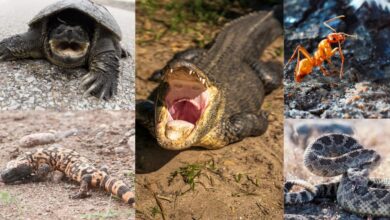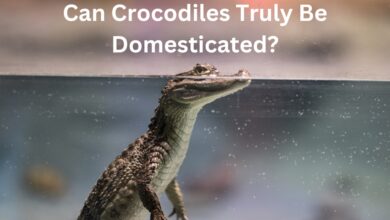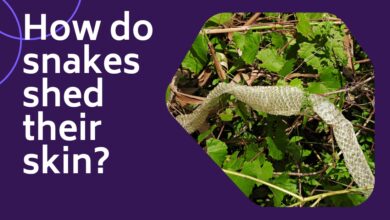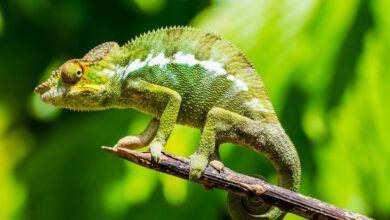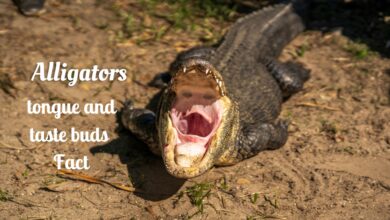Do crocodiles experience any pain? (Fully explained)
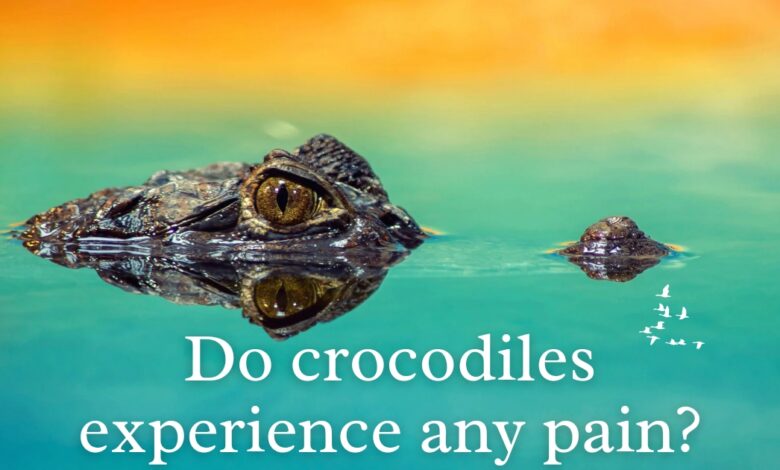
Do crocodiles experience any pain? (Fully explained)
Renowned as formidable predators with few natural enemies besides humans, crocodiles exhibit aggression and strength. Their robust defense lies in tough, thick, armored skin adorned with scales known as scutes. Despite the resilience these scutes provide against attacks, they carry a paradoxical trait – sensitivity to pain.
These large reptiles boast concentrated colored domes scattered across their skin, serving as areas of heightened pain perception and sensitivity. While their exterior may be a formidable defense, it does not diminish their capacity to feel pain, emphasizing the intricate balance between strength and vulnerability in these extraordinary creatures.
Crocodile Responses to Pain
Crocodiles, known for their non-vocal nature, exhibit shifts in behavior and mood when experiencing pain. In environments such as zoos and animal facilities, it’s not uncommon to observe sick or injured crocodiles expressing irritation or heightened aggression.
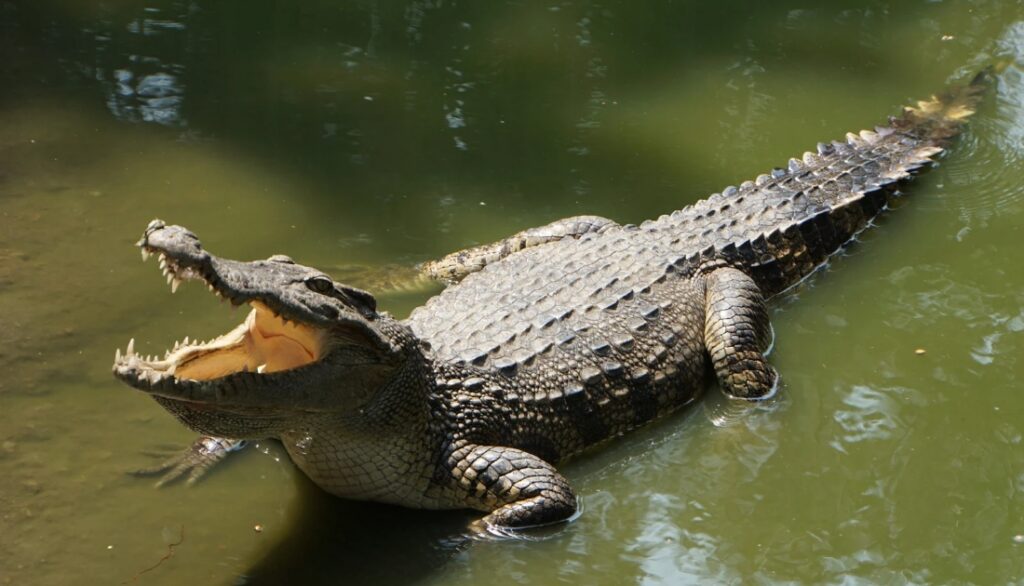
While aggression is a characteristic behavior, heightened sensitivity to noise, touch, and sight may indicate significant pain in these reptiles. Facilities caring for alligators and crocodiles remain vigilant for signs such as bacterial infections or skin gashes as potential indicators of distress in these creatures.
How do crocodiles show emotions?
Contrary to prior beliefs, crocodiles, intelligent reptiles, engage in affectionate behaviors during mating rituals. A comprehensive literature review reveals that crocodiles possess a wide range of emotions, challenging earlier assumptions about reptilian emotional capacities.
These highly social and hierarchical animals showcase emotional depth, differing from past perceptions. The discrepancy in understanding may be attributed to observations of reptiles in captivity, where inadequate access to essential vitamins and nutrients may hinder their overall well-being and expression of natural behaviors.
Crocodile General Types
The world acknowledges the existence of 24 distinct crocodile species, each exhibiting variations in size, appearance, and behavior. However some common type of crocodile are explained here:
Freshwater Crocodiles (Masters of Aquatic Habitats)
Inhabiting freshwater environments, freshwater crocodiles are commonly sighted in rivers, lagoons, lakes, and creeks. Despite their extensive travels, these crocodiles often return to familiar bodies of water.
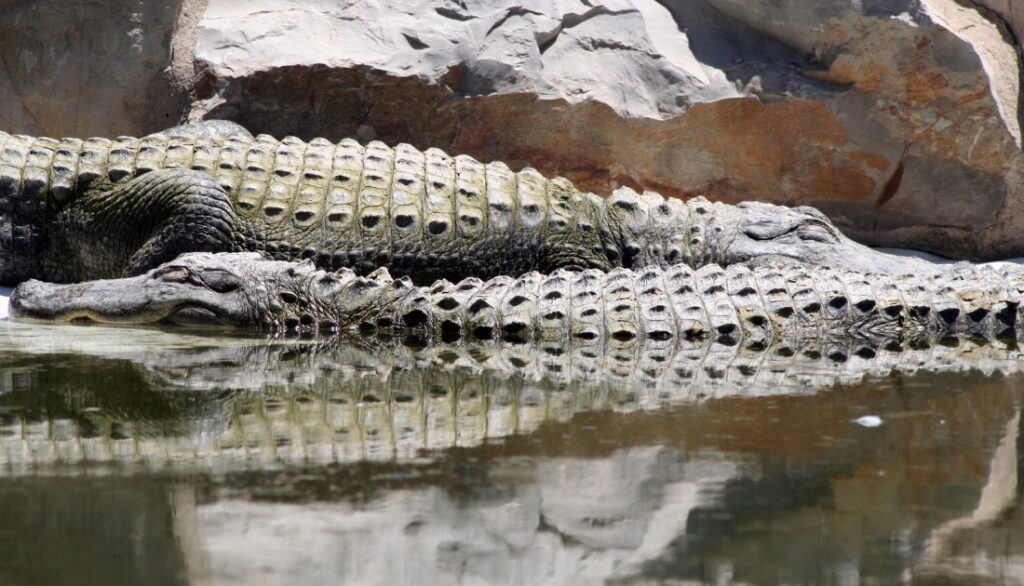
Finding refuge in burrows beneath tree roots, typically submerged, freshwater crocodiles exhibit year-round activity in various locations across Australia. An intriguing aspect of their behavior is the “high walk” stance, allowing them to emerge from the water with minimal contact between their belly and tail and the ground.
Saltwater Crocodiles (Giants of the Reptile World)
Among the most renowned crocodile species, saltwater crocodiles stand out for their massive size, often exceeding 2,000 pounds. While they can reach lengths of up to 23 feet, their average size is around 17 feet. In the wild, these formidable creatures have a lifespan of approximately 70 years.
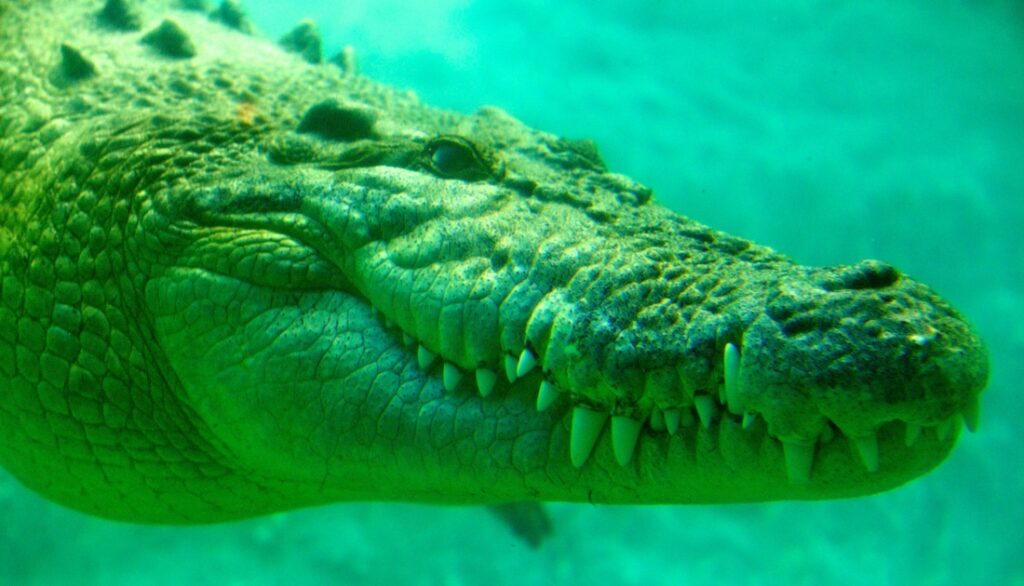
Equipped with powerful jaws, saltwater crocodiles are formidable hunters, adept at ambushing their prey in aquatic environments. Their diet includes a variety of large prey such as fish, snakes, wild boars, buffalo, and crustaceans.
Nile Crocodiles (Iconic Reptiles of Africa)
When people envision crocodiles, the image of Nile crocodiles often comes to mind. These sizable, long-nosed reptiles are prevalent across Africa, spanning at least 26 countries. With an average length of 16 feet and a weight of approximately 500 pounds, Nile crocodiles are notable for their imposing presence.
These crocodiles display vocal behaviors, making a splash in the water when expressing interest in a potential mate. Additionally, they engage in playful activities, blowing water through their nostrils to create a captivating fountain-like spray.
Spectacled Caimans (South and Central American Natives)
Inhabiting regions of South and Central America, including Mexico and Argentina, spectacled caimans are typically solitary creatures that form loose groups. Also recognized as white caimans, these reptiles are comparatively smaller than most crocodile species, reaching lengths of up to 6.5 feet, with females usually ceasing growth around 4.5 feet.
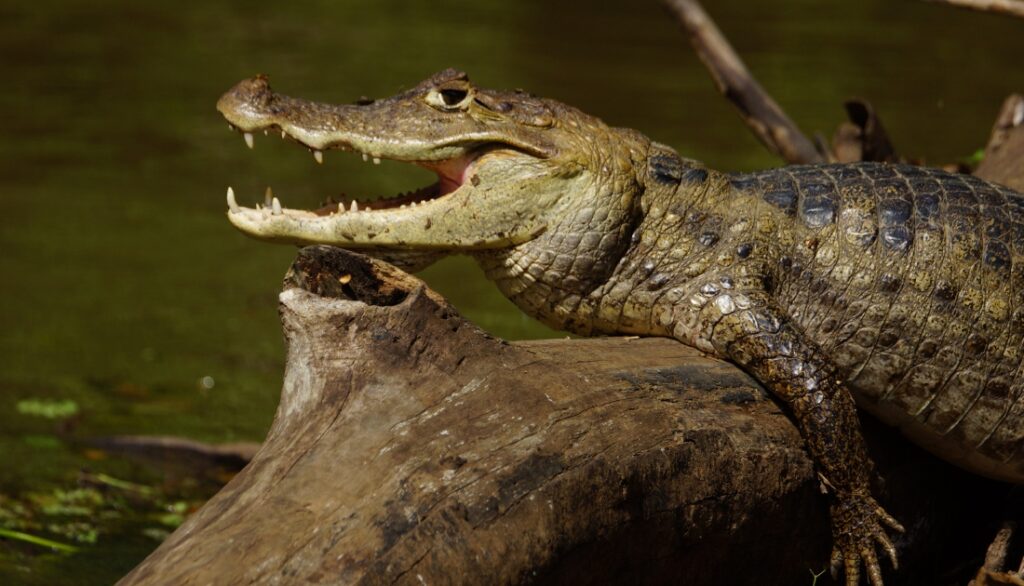
In captivity, their lifespan is around 20 years, while in the wild, spectacled caimans can live up to 70 years. However, the common lifespan for small caimans in their natural habitat falls between 20 to 50 years.
American Crocodiles (Majestic Residents of the Southeast)
As one of the world’s largest reptiles, American crocodiles inhabit the southeastern United States, coexisting with American alligators in the Everglades. Interestingly, they exhibit a more docile demeanor compared to their alligator counterparts.
Distinguishing features include their narrower, triangular snouts and shorter legs, often causing confusion with alligators. While capable of reaching lengths of up to 20 feet, in the wild, they typically cease growth around 14 feet. Females are generally smaller than males.
Cuban Crocodiles (A Struggle for Survival)
Cuban crocodiles face critical endangerment, originally native to Cuba’s Zapata Swamp and Lanier Swamp on Isla de Juventud. Once widespread, they inhabited the Cayman and Bahaman islands.
Feeding on fish and small mammals, juveniles focus on smaller fish, while adults have a broader diet that includes young crocodiles. With a lifespan ranging between 50 to 75 years, Cuban crocodiles grapple with the challenges of survival, with adult individuals even preying on their younger counterparts.
Read Also: How Do Sloths Protect Themselves? (Explained)
Marsh crocodile
The Marsh Crocodile (Crocodylus palustris) is a formidable reptile native to South Asia, prominently inhabiting regions of India, Sri Lanka, and Pakistan. This species thrives in a variety of freshwater ecosystems, displaying a robust physique, broad snout, and distinct scaly armor.
With a typical length ranging from 10 to 16 feet, these crocodiles are skilled predators, preying on fish, amphibians, and small mammals. Known for both diurnal and nocturnal activity, Marsh Crocodiles play a crucial role in maintaining the ecological balance of their habitats. Despite facing threats such as habitat loss, conservation efforts strive to safeguard this species and its vital ecological role.
FAQs
Could crocodiles grow Back Limbs?
No, In contrast to certain lizard species that can regrow tails, crocodiles lack the ability to regenerate limbs. If a crocodile loses a leg, it must adapt to living the remainder of its life without the lost limb, as limb regrowth is not a characteristic feature for these reptiles.
Does crocodiles skin is bulletproof?
Contrary to misconceptions, crocodile skin is not bulletproof. While they can be shot, and it does cause harm, their skin does provide a robust outer layer of protection akin to armor.
How much sensitive is crocodiles skin?
Crocodile skin boasts exceptional toughness and durability, surpassing human fingertips in strength. Remarkably, it is ten times more sensitive than the touch-sensitive fingertips of humans.
Conclusion
Crocodiles, like to other animals, experience the sensation of pain. Their heavily armored skin enhances their sensitivity to this feeling. Remarkably, crocodiles exhibit minimal reactions to pain, often utilizing their sensitive skin as a hunting tool rather than overtly responding to discomfort.
